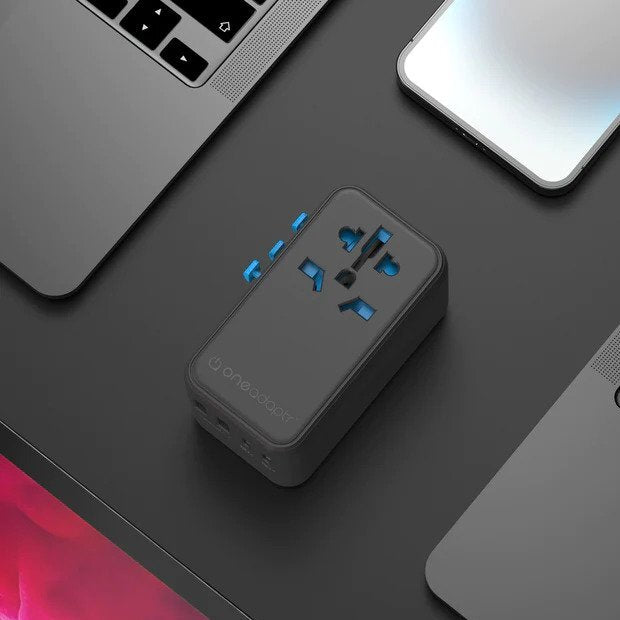GPT-4o Unveiled: Free ChatGPT users can now do these 6 things!
By Naila Syifa
Updated May 2024

OpenAI announced its new flagship model, the GPT-4o, during the Spring Update event on May 13.
GPT-4o vs GPT-4
The GPT-4o, with "o" standing for omni (meaning "all" or "whole"), is a multimodal model capable of processing and understanding information from multiple modalities, including text, image, audio, and video, as well as generating outputs in text, image, and audio.
This is a significant leap from the previous GPT-4 model, which uses multiple single-modality models to process inputs and generate outputs.
For example, when talking to ChatGPT using Voice Mode, the previous model would use 3 separate models: one model to transcribe users' audio to text, one model to process the textual input and generate textual output, and one model that converts the text back to audio.
GPT-4o, on the other hand, is capable of handling all of these tasks within a single, unified model from end to end. The result is significantly faster processing times and smarter understanding, with the ability of picking up subtle details like tone of voice or context that would otherwise be missed by separate single-modality models.
Access for free users
The good news is, GPT-4o is accessible for all free users, demonstrating OpenAI's commitment to making advanced AI technology accessible to everyone. We only need to sign up for a free account to use the new GPT-4o capabilities.
However, free users are limited in the number of requests they can make, which will vary based on usage and demand. When the rate limit is reached, free users will be switched back to GPT-3.5. Meanwhile, ChatGPT Plus subscribers have 5 times the usage limit of free users.
OpenAI mentioned:
"As of May 13th 2024, Plus users will be able to send up to 80 messages every 3 hours on GPT-4o and up to 40 messages every 3 hours on GPT-4. We may reduce the limit during peak hours to keep GPT-4 and GPT-4o accessible to the widest number of people."
GPT-4o features for free users
Despite the limits, the new accessibility of GPT-4o for free users opens up a world of possibilities for the creative and productive use of advanced AI technology. We'll now explore the new features that free users can now leverage with ChatGPT.
Note that these features are being rolled out slowly in phases. So, if you don't see them available right away, check back in the coming weeks.
#1 Browse the web

ChatGPT Web Browsing
Previously, free users were limited to the information contained within the ChatGPT knowledge base, which is a snapshot of the internet up to 2021. Now, free users can browse the live internet and access up-to-date information to answer queries or complete tasks. ChatGPT uses Bing to do this.
For example, you can ask "What's new in tech today?" to get an overview of the latest technology news and developments. ChatGPT will also provide links to relevant articles and websites, similar to how Perplexity provides web search results.
We can also provide a link to a website, and then ask ChatGPT to analyze it, summarize the content on the website, extract key information from it, or answer specific questions about the website. This can greatly help free users in research and information gathering.
#2 Upload photos and other media files

Upload Media to ChatGPT
Free users can now attach images, audio, video, and other media files (like documents, spreadsheets, and PDFs) to ChatGPT and have the AI analyze and describe the content, answer questions about it, and more.
For example, you can upload a photo and ask ChatGPT to describe what it sees, identify the objects and people in the image, or even generate a short story inspired by the photo. This opens up a whole new world of creative and analytical possibilities for free ChatGPT users, allowing them to leverage the model's multimodal capabilities beyond just text-based interactions.
#3 Analyze data, create tables and charts

ChatGPT for Data Analysis
Free users can now upload CSV files, spreadsheets, and other structured data to ChatGPT, and have the model analyze the information, generate insights, and create visualizations like charts and graphs.
This can be incredibly useful for tasks like market research, financial analysis, or scientific data exploration, where ChatGPT can quickly surface key trends, patterns, and takeaways from complex datasets. For example, you can ask ChatGPT to analyze sales data, identify top-selling products, and generate a summary with visualizations.
This feature greatly expands the analytical capabilities available to non-paying ChatGPT users, empowering them to work with data more effectively.
#4 Explore GPT Store and use custom GPTs

Custom GPTs
Free users can now also discover and use custom GPTs in the GPT Store. Custom GPTs are specialized AI models created by third-party developers, each with unique capabilities tailored for specific use cases.
For example, Canva custom GPT allows users to generate any design by entering a text prompt in the chatbot. There is also custom GPTs for coding, conducting academic research, writing creative fiction, and much more.
Free users are limited to using custom GPTs in the GPT Store, while Plus subscribers have access to create custom GPTs for their own use or publish them for public use.
#5 Use ChatGPT Memory

ChatGPT Memory
Memory enables ChatGPT to remember certain information you discuss across all chats, so you don't have to repeat information for future conversations.
Once rolled out, free users will be able to tell ChatGPT to remember certain things, ask what it has remembered, and have it forget information when needed. You can also manage the memory in the settings to view and delete what you've asked it to remember.
For example, you asked ChatGPT to remember that you follow a vegetarian diet. When you later ask ChatGPT for restaurant recommendations, it will suggest vegetarian-friendly options based on the information it has remembered about your dietary preferences.
#6 Voice conversation

ChatGPT Voice
The voice chat feature has already been accessible for free users since late 2023, but we're letting you know here in case you haven't tried it out yet. The feature is currently accessible in ChatGPT mobile apps for both iOS and Android.
With voice conversation, free users can get hands-free assistant support for a variety of tasks, from asking questions, brainstorm ideas, or even asking ChatGPT to narrate a bedtime story. We also find it quite helpful to practice foreign languages, leveraging ChatGPT multilingual capabilities as a practice partner, though the delay in response makes it less natural and smooth.
A new voice mode powered by GPT-4o offers faster, more natural, realistic, and smarter voice interactions that can understand different tones of voice, recognize multiple speakers in conversations, speak with different intonations, sing, and more.
However, OpenAI has only announced the new real-time voice mode, along with real-time vision (a video chat-like feature), to be rolling out to ChatGPT Plus over the coming months. It remains to be seen whether free users will also gain access to the new real-time voice mode and vision features in the future.
Don't miss out on tech
Subscribe to our newsletter to stay up to date on the latest tech trends and guides on the best gadgets around.






























Leave a comment
This site is protected by hCaptcha and the hCaptcha Privacy Policy and Terms of Service apply.